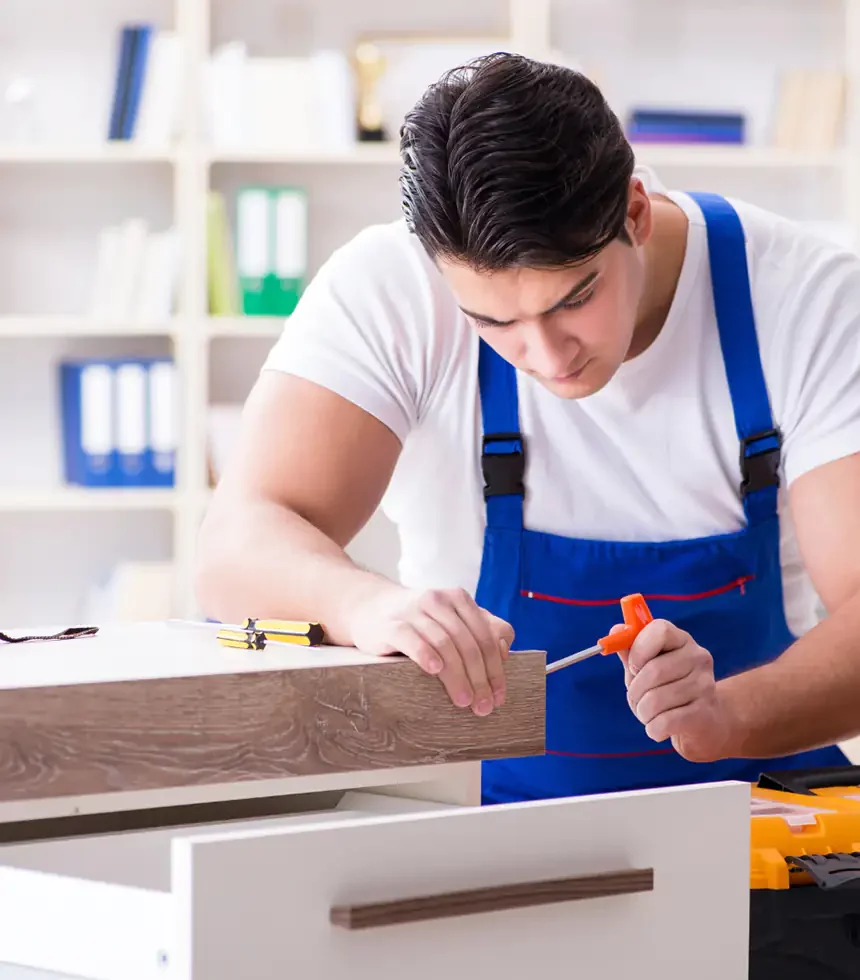
Moving can be both an exciting and daunting experience. Whether relocating to a new city, downsizing, or simply changing your living space, the process involves careful planning and execution. One crucial aspect of a smooth move often hinges on how you handle your furniture or pieces of furniture. Should I disassemble furniture before moving? This question can significantly impact the ease and success of your relocation.
This comprehensive guide explores the advantages of disassembling furniture when necessary, the necessary tools and supplies, a step-by-step disassembly guide, and essential reassembly tips for moving day. We’ll also delve into exceptions and alternative solutions for specific situations. By the end of this article, you’ll clearly understand whether you should disassemble your furniture before your next move.
Advantages of Disassembling Furniture
Easier Transportation
Moving furniture, especially bulky items, can be a logistical challenge. Disassembling your furniture provides several advantages when it comes to transportation and reduces the risk of damage:
Reducing Bulk and Weight
Large furniture pieces can take up a significant amount of space in a moving truck. By disassembling them, you can reduce their size and weight, allowing you to utilize the available space more efficiently.
Maneuvering Through Narrow Spaces
Tight staircases, narrow hallways, and small doorways can pose obstacles when moving large and bulky furniture. Disassembled pieces of furniture items are much easier to navigate through confined spaces.
Protection from Damage
Furniture is an investment, and you want to ensure it arrives at your new location in excellent condition by experienced movers. Disassembling your furniture can help protect it during the move:
Minimizing Scratches and Dents
Furniture with delicate finishes or intricate designs is susceptible to damage during transit. Disassembly minimizes the risk of scratches, dents, or other surface blemishes.
Ensuring Structural Integrity
Heavy furniture can endure stress during transportation, potentially leading to structural damage. Disassembling and properly packaging each component ensures the structural integrity remains intact.
When to Disassemble Furniture
Determining when to disassemble your furniture depends on various factors. Consider the following:
Size and Type of Furniture
- Large vs. Small Pieces: Large items like armoires, dining tables, vanity tables, and sofas are prime candidates for disassembly using disassembly tools and special tools. Smaller, lightweight furniture may not require disassembly.
- Complex vs. Simple Designs: Furniture with intricate designs, detachable components, or modular features is more suitable for disassembly.
Destination Factors
- Stairs, Elevators, and Hallways: If you have to navigate multiple flights of stairs, tight hallways, or use elevators, disassembling furniture can make the process smoother and extra protection.
- Doorway Dimensions: Measure doorways at your old and new locations to ensure your furniture can pass through without issues.
DIY vs. Professional Movers
- Assessing Your Moving Team: If hiring professional movers, discuss your furniture disassembly needs with them. They may offer disassembly services as part of their package.
- Time and Cost Considerations: DIY disassembly takes time, so weigh the benefits against the additional effort. Consider the cost of hiring professionals versus the time and effort you’ll save.
Tools and Supplies for Furniture Disassembly
Before you begin disassembling your furniture, gather the necessary tools and supplies:
Essential Tools
Screwdrivers, Allen wrenches, and pliers are essential for removing screws, bolts, and other fasteners.
- Ziplock bags and markers: Use these to organize and label hardware for each piece of furniture.
- Furniture sliders and blankets: These help protect the floor and make it easier to move heavy furniture.
Safety Precautions
- Protective gear: Wear gloves and safety glasses to prevent injuries and safer transportation.
- Securely storing hardware: Place all screws and bolts in labeled bags or containers, and tape them to the corresponding furniture piece.
- Organizing disassembled parts: Keep parts contained using small boxes or bags and labeling them clearly.
Step-by-Step Guide to Disassembling Furniture
Now that you have your tools and supplies ready, follow these steps for a successful furniture disassembly process:
Gather Necessary Supplies
Before you start, create a dedicated disassembly kit with all your tools, supplies, protective materials, and safety gear. Allocate a workspace where you can arrange and store disassembled parts.
Label and Document
To make reassembly more accessible, take photos of the furniture before disassembly and label each piece clearly. This will help you remember how everything fits together.
Start with the Right Pieces
Begin by removing cushions, accessories, and any detachable parts. Once you’ve done that, focus on unscrewing the legs and other hardware that holds the furniture together.
Disassemble with Care
Follow the manufacturer’s instructions for disassembly if available for delicate furniture. Be cautious not to over-tighten screws during removal, as this can strip them or damage the furniture.
Store Safely
Bag and tape the hardware to the corresponding furniture piece or place them in labeled containers. Wrap fragile parts and fragile furniture in blankets or bubble wrap to prevent damage during transit.
Keep Manuals and Instructions
Don’t forget to keep the assembly manuals and instructions for your furniture pieces. These will be invaluable when it’s time to reassemble everything.
Moving Day – Reassembly Tips
Moving day has arrived, and it’s time to put your disassembly efforts to good use. Follow these tips to ensure a smooth reassembly process:
Layout and Organization
Create a designated assembly zone at your new location. Lay out all the disassembled furniture pieces in an organized manner. Refer to the photos and notes you took during disassembly.
Patient and Methodical Reassembly
Start with essential pieces like frames and structural components. Assemble these first and ensure they are aligned and level. Avoid rushing through the process to prevent mistakes.
Quality Control
After reassembling each piece, perform a thorough quality check. Ensure all screws are tight and no parts are missing or damaged. Test the stability and functionality of the furniture.
Post-Move Furniture Care
Before you settle in, take some time to clean and polish your furniture. Touch up any scratches or dents that may have occurred during the move, ensuring your pieces look their best in your new home.
Exceptions and Alternatives
While disassembling furniture is generally a good practice, there are exceptions and alternative solutions to consider:
When Not to Disassemble
- Built-in Furniture: Furniture built into your home’s structure, such as bookshelves or kitchen cabinets, may not be feasible to disassemble.
- Antiques and Collectibles: Valuable or delicate antique furniture may be better off moved as-is with extra care and protection.
Professional Assistance
- Furniture Disassembly Services: If you have valuable or complex furniture you’re uncomfortable disassembling, consider hiring professionals specializing in furniture disassembly and reassembly.
- Custom Crating for Fragile Items: For extremely delicate items, custom wooden crates can provide the highest level of protection during transit.
Innovative Moving Solutions
- Modular Furniture: Some modern furniture is designed for easy disassembly and reassembly. Consider pieces that offer this flexibility if you’re looking for new furniture.
- Furniture with Removable Components: Explore furniture options with removable components that make moving and transportation more manageable.
Conclusion
In conclusion, deciding to disassemble furniture before moving depends on various factors, including the size and type of table, your destination, and your available resources. While disassembly can offer significant advantages in more accessible transportation and protection from damage, it’s essential to assess your specific situation and needs.
By following the step-by-step guide and considering exceptions and alternatives, you can make an informed decision for your next move. Remember that carefully disassembling and reassembling your furniture can provide a seamless and stress-free moving experience. So, whether you’re relocating across town or the country, take the time to plan and prepare for a successful move that preserves the beauty and functionality of your furniture. If you want to know about “Do moving companies disassemble furniture?” just check out our blog page now!
Convenience and Expertise
Are you wondering whether to disassemble your furniture before moving? Gorilla Moves is here to make your move stress-free and efficient. Our expert team can assess which pieces need disassembly and handle them for you, ensuring safe transportation. Don’t hesitate – choose Gorilla Moves for a hassle-free residential move! Contact us now!
FAQs: Should I disassemble Furniture Before Moving?
How do I know which furniture to disassemble before moving?
Consider disassembling furniture that is too large to fit through doorways, staircases, or tight spaces without disassembly. Items with detachable parts, such as bed frames and dining tables, are good candidates. Additionally, fragile or valuable pieces may benefit from disassembly to prevent damage.
Can I disassemble furniture myself, or should I hire professionals?
You can disassemble furniture with the necessary tools, skills, and experience. However, for complex or valuable pieces, or if you’re not confident in your abilities, hiring professional movers or furniture assemblers who can disassemble and reassemble items with expertise is often safer and more efficient.
Are there any risks associated with disassembling furniture before moving?
Disassembling furniture carries some risks, such as losing small parts, damaging the furniture during disassembly, or not being able to reassemble it correctly later. To mitigate these risks, take photos during disassembly, keep all parts organized, and follow the manufacturer’s instructions when available. If unsure, consult a professional.
Are there any cost savings associated with disassembling furniture for a move?
Disassembling furniture can save money by reducing the overall volume of items that need to be moved, resulting in a smaller moving truck and lower transportation costs. However, remember that the time and effort required for disassembly and reassembly and any professional assistance may offset these savings. Consider both factors when making your decision.







